In the spirit of regenerative medicine, I bring you good news that is long overdue for dissemination. If you have followed my previous two articles recently, you will understand that this post sure has a strong link to them, and as such, I will recommend you get through them if you want to have a better understanding of some terminologies I might use as we progress. Welcome once again to another interesting discussion.
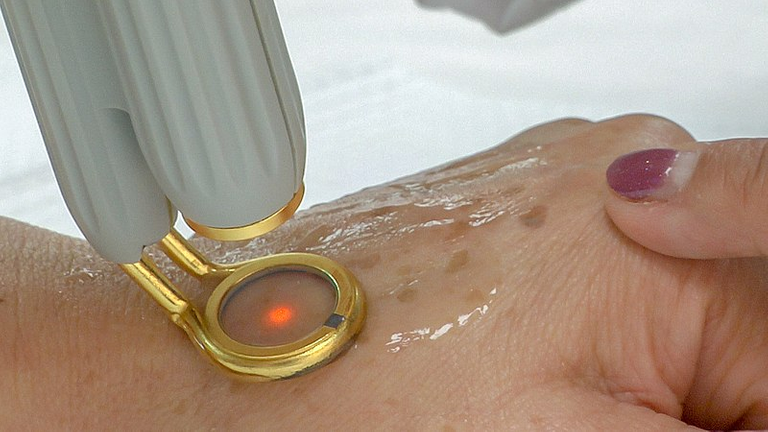
Laser hand rejuvenation to remove age spots
Today's discussion will primarily focus on revealing some of the newest products of regenerative medicine and cell engineering while we also discuss those that have long been in existence for long. You will be obviously marveled if I told you that we now have viable laboratory produced red blood cells that can serve as a replacement or as a complement to naturally produced blood in vivo. Well yeah, that is exactly what science is all about about and the more reason I love it - Innovation. The clinical trial of these blood was conducted not long ago in late last year, 2022.
I received a news update from the National health service (NHS) of the United kingdom around November 2022 about the giant strides that its joint NHS Blood and Transplant (NHSBT) has made in the area of blood transfusion medicine. I waisted to no time in checking it out, and what I read was remarkable and amazing. Care to know the details? Read on!
What was obtainable before now
In 1957, Waddington postulated that postulate once a cell is fully differentiated, it cannot revert back to a pluripotent state. This theory was what he referred to as the unidirectional postulate of development. The possibility of reprogramming and inducing a fully matured adult somatic cell has been able to prove to us that indeed, cells can go back to its primitive stage. In essence, what determines the ability of cells reverting back to pluripotency is the presence of a combination of factors which were described as the Yamanaka Cocktail.
Cells that are gotten through the induction from adult to pluripotency are called induced pluripotent stem cells. I have discussed extensively on how this done in the presence of the factors. You read my last article to get a better understanding of this interesting process. You can read this article for details - There is nothing as sweet and biologically rich in nutrients as the Yamanaka Cocktail: Interested? Come and learn
What is obtainable now
Ever since the understanding of how to reprogram cells, a lot has been discovered and this has greatly helped various scientist and researchers understand better, the molecular basis of disease pattern and hoe to model progression of diseases like cancer and some neurodegenerative diseases. I will introduce you to some of the major products of cell reprogramming and how they will and have greatly impacted human existence positively.
The first is CAR T-cells. CAR T-cells are genetically modified T-cells that are specifically designed to attack cancer cells in the body. They are made to locate any cell that is cancerous and totally eliminate them because they have been equiped with a type of receptor known as the chimeric antigen receptor. So the use of these genetically modified T-cells in the treatment of cancer disease, is what is referred to as Chimeric Antigen Receptor T cell therapy.
The use of these modified T-cells have helped alot in the treatment of majorly liquid cancers that have been proved to be very difficult to treat. To be specific, cancer types like refractory Acute lymphoblastic leukemia and also non-hodgkin lymphoma, a type of cancer that is poor differentiated thus, making treatment very difficult. Though the treatment is not yet applicable to all type of cancers, especially the solid tumours because of the tissue environment. Solid tumours offer great resistance to the penetration of the CAR T-cells, hence limiting their capability of killing the cancer cells inside the tissue.
A lot of research research is still on going to find a better way to assist these T-cells in penetrating the tissues. This is an area I am also interested in. If it is possible to soften these cancer cells using nuclear softening agents like Trichostatin A (TSA) then, no doubt, we will be at the verge of finally defeating these cancer cells. I have already prepared a lovely detailed article on everything you need to know about CAR T-cells and it therapy, feel free to read it here - Catching up with the Chimeric Antigen Receptor T-cell therapy for Cancer treatment: Cancer cure is no longer far. Alright, enough of CAR T-cells, let's talk about others.
Next on my list is the novel laboratory grown blood cells. Probably you are not aware of have read or heart about this, it is now possible to artificially produce human blood types that can carryout the normal physiological functions of blood and one of which is the primarily the transportation oxygen, hormones, enzymes nutrients and minerals required by organs, tissues and cells for optimal functions.
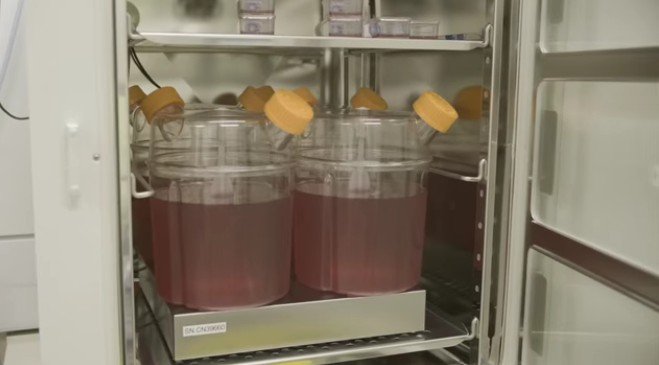
Laboratory grown blood
Recent breakthrough in research has made us understand the possibility of producing blood in the laboratory. artificially blood that are grown in the laboratory. In my next article, I will try and go in details hoe these red blood cells are produced in the laboratory. However, mainly, laboratory blood cells are produced by two main ways, one is through induced pluripotency which we have already discussed (conversion of adult somatic cells to pluripotent stem cells, specifically the haematopoietic stem cells, which are the progenitor cells for matured blood cells).
Second way can also be through the isolation of haematopoietic stem cells from the bone marrow of the patient, and then artificially growing these pluripotent stem cells in cell cultures in the laboratory. We will discuss this better in our next article and I will also try and make comparison between it and natural blood. The aim will be to find out if there is any significant difference and similarities between both. It will sure be an interesting discussion.
In a nutshell, you can grow blood in the laboratory and they can be transfused into patients with blood compatibility issues. The first ever clinical trial has already been conducted and the patient are being monitored for various features like life cycle, oxygen carrying capacity and more. To read more about the clinical trial, please consult the reference section of this article.
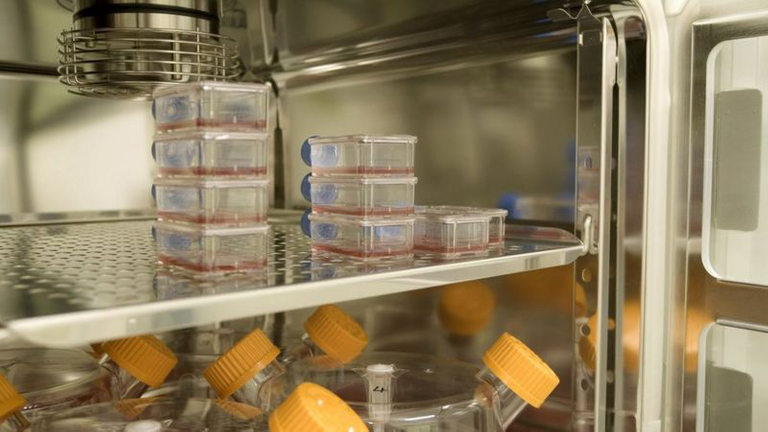
Growing blood in cell cultures bottles
Another interesting product of cellular reprogramming and regenerative medicine is organoids. Just as the name suggest, organoids are three-dimensional structures that mimic the structure and function of organ in our body system. We mainly use them in modelling drug experiments. Long gone are the days where most research rely on using humans subjects for drug testing and other pharmacological studies. They are created by reprogramming stem cells to differentiate into specific types of cells and self-assemble into organ-like structures.
We no longer have to depend on humans only to carryout toxicological studies and more. Organoids have come to fill in this gap that has long hindered progress in research in finding an ultimate and permanent solution to diseases that plagues human existence. Organoids in most cases usually resemble the humans organs, hence the reason for their effective use disease modelling and study.
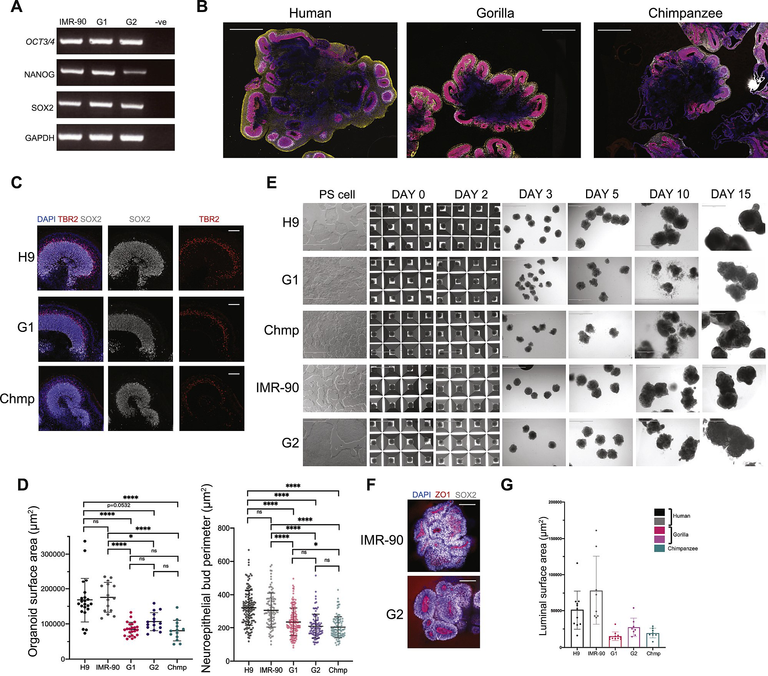
Human and ape stem cells and organoids are highly comparable in terms of identity and morphology. "A. RT-PCR shows expression of pluripotency markers (OCT3/4, NANOG, SOX2) and GAPDH loading control in IMR-90, G1 and G2 cell lines. –ve is the water negative control. B. 5-week organoids stained for neural progenitor marker SOX2 (red), dorsal telencephalic/intermediate progenitor marker TBR2 (gray), neuronal markers TUJ1 (human) and HuCD (gorilla, chimpanzee) in yellow, and DAPI (blue) showing human (H9) derived organoids become larger in overall size than gorilla (G1) and chimpanzee (Chmp) organoids.
Indeed, organoids are quite a great deal in research. Next is recombinant proteins like insulin and other hormones that have greatly helped in the treatment of diseases. When the pancreas responsible for the regulation of blood sugar fails, the resultant effect is an elevated increase in the plasma level of blood sugar, and this condition is referred to as diabetes. Insulin which is a peptide hormone is produced by the pancreas.
People with diabetes disease are unable to produce enough insulin to mop up the excess glucose in the blood. To handle this situation, insulin that are artificially synthesized can thus be given to these diabetic patients. The production of insulin is pretty not much difficult as when compared with other artificial products of cellular reprogramming, they produced artificially through the application of recombinant DNA technology (involves the reconfiguring of the DNA of another cell and inserting foreign gene).
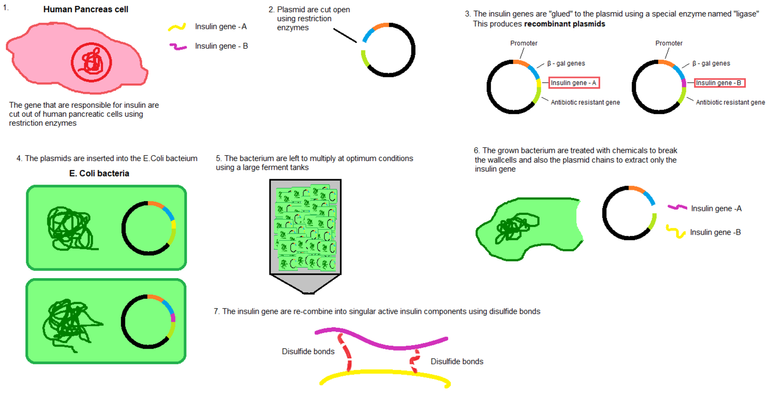
8 different major steps of producing insulins starting from using human pancreas cells until the insulin itself
To obtain insulin, the genes that codes this in human insulin is inserted into a bacterial or yeast cell and then the microorganism is allowed to grow in a cell culture. As they grow, they produce insulin protein in large quantities. The quantity of insulin produced always depends on the size biomass reactor which contains all the necessary minerals and growth factors that the microorganism needs for growth. As long as nutrients are supplied and all necessary conditions are met, they will continue to produce insulin infinitely.
Similarly, cell reprogramming can be used to create cells that produce other biologic drugs besides insulin. Growth hormone, and antibodies (monoclonal antibodies to be specific) that are use in immunotherapy for cancer treatment. Generally, cells can be engineered to produce large quantities of drug, synthetic proteins and peptide which can be further purified and used for medical treatments.
Cellular reprogramming has revolutionized the world of regenerative medicine and its products also even cuts across organ and tissue transplanting. One of the common problem with tissue or organ transplant, is the tissue rejection and possible immune reactions. Now, if we can simply get the cell of the host and grow it in the laboratory, it will most likely produce exact same tissue as from the host source. This way, the chances of graft rejection will be highly unlikely.
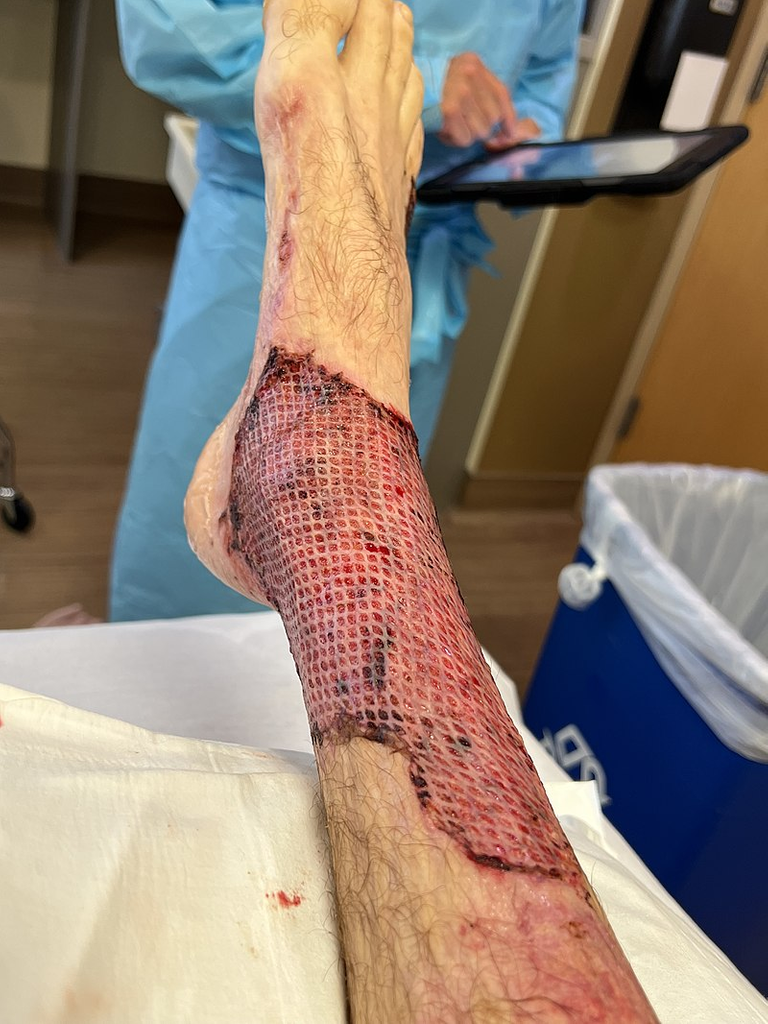
Skin Graft on Ankle after Third Degree Burns
Tissue grafts, skin grafts to be specific has been one of the most applicable area. It is very possible reprogram regenerate a tissue from a patient who has had a serious skin injury and produce fresh skin tissue. This can be done by simply obtaining cells from the skin of patient, say burn victim. After reprogramming the somatic adult cell (i.e the cells from the graft tissue), it can then be used to cover the inured areas of the patient's skin.
This is how interesting and beneficial cellular reprogramming is to us as humans. In fact, we need not recklessly kill animals anymore as meat to be used for feeding other wild animals. It is very possible to produce meat in the laboratory for. Yeah, that is true, are you surprised? Well it is logical enough to be true. I mean, what makes up meat, if not proteins formed from tissues. Rather than killing animals which will be fed to wild animals in the zoo, through cellular reprogramming, it is now very possible to produce and create meat alternatives, such as cultured meat.
All that is required, is to reprogram the cells from any animal muscle tissue and then grow them also in the laboratory so that they mature and differentiate into muscle tissues that will then be harvested and used to create meat products without having to kills or slaughter large number of animals just to feed a hungry carnivorous animal.
No doubt, we are gradually drifting from the world of impossibilities. The above are just a glimpse from what is out there. Well, in as much as all these are beneficial, strict regulation is of utmost importance. Imagine eating meat from laboratory sources, how is that going to feel like? Well, at this point, I will leave you to ponder on that. If it can be fed to animals, chances are high that, in no time soon, they may find their way into our pots.
That will be all for today, see ya!
References
Lab-grown blood given to people in world-first clinical trial
First ever clinical trial of laboratory grown red blood cells being transfused into another person
Researchers are trialing lab-grown blood transfusions: What to know
Modeling the Hematopoietic Landscape
Production of Recombinant Pharmaceutical Proteins
Eating meat without slaughtering animals may be in our future

Congratulations!
✅ Good job. Your post has been appreciated and has received support from CHESS BROTHERS ♔ 💪
♟ We invite you to use our hashtag #chessbrothers and learn more about us.
♟♟ You can also reach us on our Discord server and promote your posts there.
♟♟♟ Consider joining our curation trail so we work as a team and you get rewards automatically.
♞♟ Check out our @chessbrotherspro account to learn about the curation process carried out daily by our team.
🏅 If you want to earn profits with your HP delegation and support our project, we invite you to join the Master Investor plan. Here you can learn how to do it.
Kindly
The CHESS BROTHERS team
❤️
The beauty of the future is just something to marvel at, a lot of times i wonder what goes on in the minds of our mothers and fathers who are now seeing these amazing scientific discoveries and modern medicine that didn't exist about 5 decades ago, then i try to imagine what would probably be available to us as human species with regards to healthcare in the next couple of decades....
They would probably be wishing there were solutions to the diseases and ailment that cut their life short.
There is a lot to uncover!
Thanks for your contribution to the STEMsocial community. Feel free to join us on discord to get to know the rest of us!
Please consider delegating to the @stemsocial account (85% of the curation rewards are returned).
Thanks for including @stemsocial as a beneficiary, which gives you stronger support.
❤️